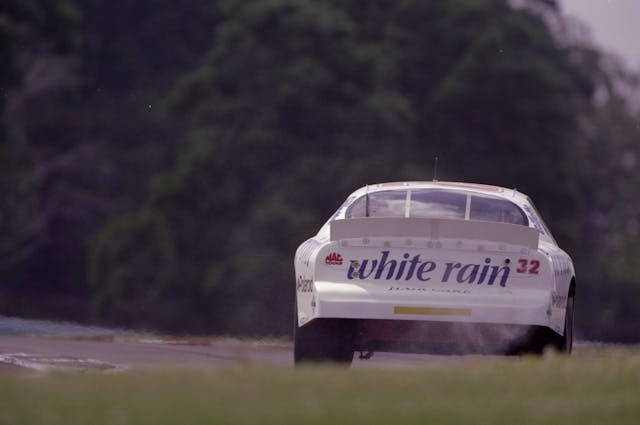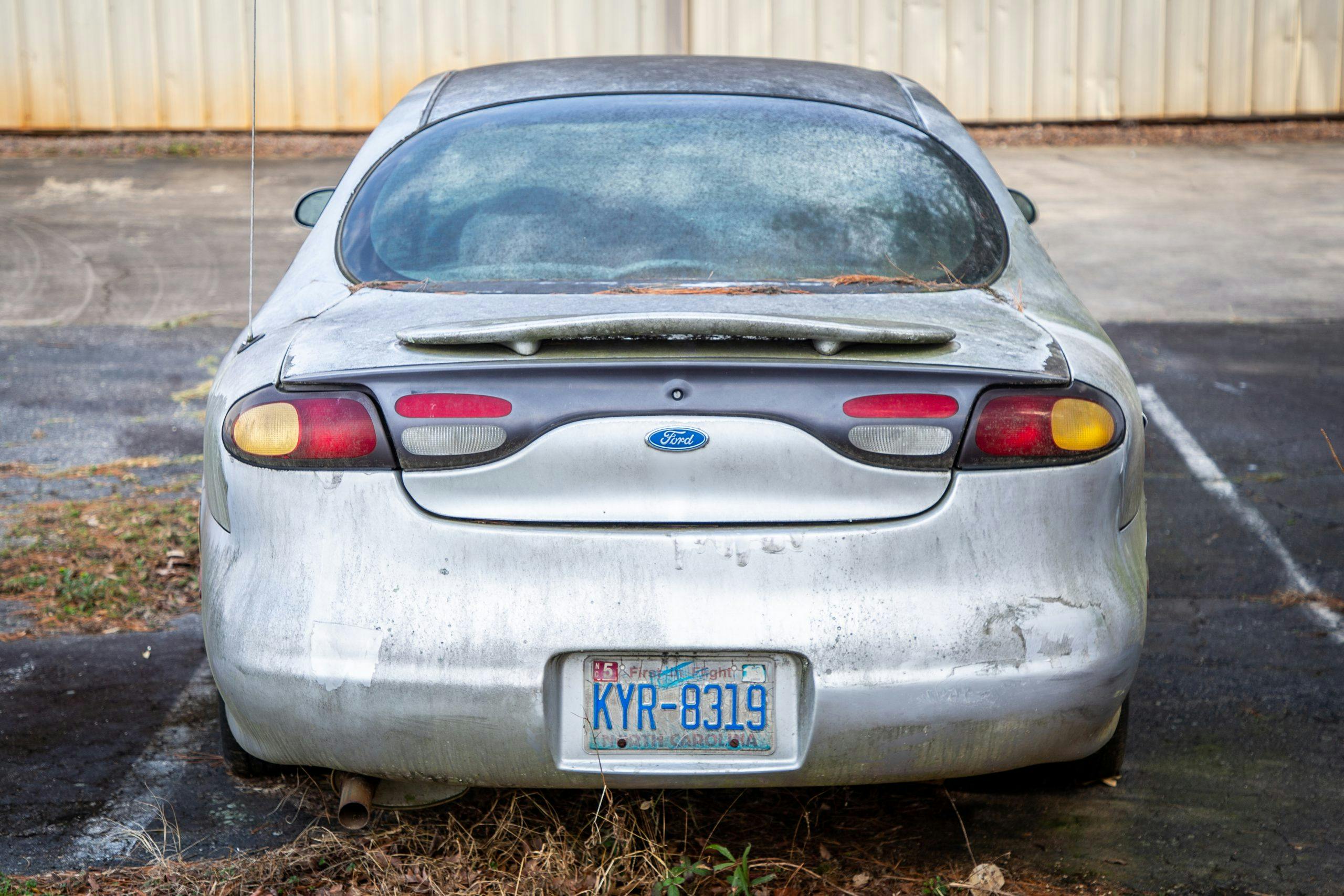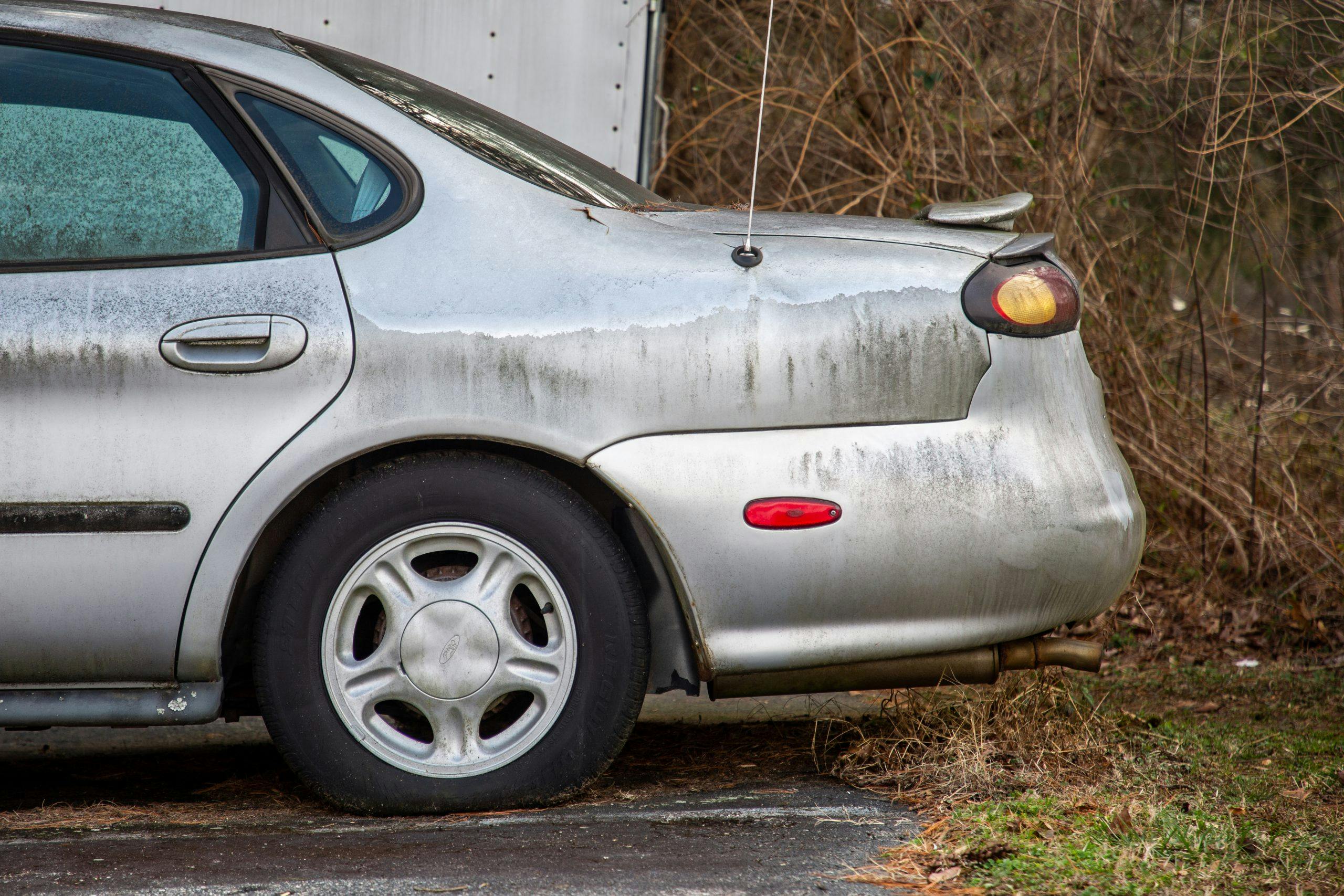The secret Ford Taurus that changed NASCAR forever
While visiting the North Carolina Auto Racing Hall of Fame in Mooresville, owner Don Miller took us for a walk behind the museum to show off a rather shabby Ford Taurus GL. Dilapidated and covered in creeping fungus, this particular silver sedan brought about a massive sea change in NASCAR in the late 1990s.

During the 1996 NASCAR Cup Series season, Ford’s global director of racing Dan Rivard alerted Penske South president Miller that the Blue Oval would soon be discontinuing the Thunderbird, which would preclude Ford teams from campaigning the proven model in stock car competition. These are the events that transpired in the following two years:
“I asked Dan if he knew what we were going to race instead of the Thunderbird,” says Miller, who until that point had numerous wins in the proven Fords. Rivard was silent on the other end of the line. The Ford exec knew that the Blue Oval had plans to stay in NASCAR despite the unknown model for 1998, so he tasked Miller with building a prototype. The proof of concept would be shown to the bigwigs at Ford Racing, which had a new general in Bruce Cambern.
Rivard’s only stipulation for Miller was that he could only utilize Ford sheetmetal stampings. The exec had the upmost confidence that regardless of what Miller and team built, Ford could build a fleet of limited-production homologation cars to satisfy NASCAR’s rulebook.
Miller set to work with his Penske South cohort, which included engineer Andrew Scriven and fabricator Ralph Brawley. Miller knew Brawley—the man they affectionately called “Muttley”—would be key to the weekend-only skunkworks. Arguably the best metalsmith in the Southeast, Muttley repaired new Porsches damaged in transit before they were to be sold stateside.
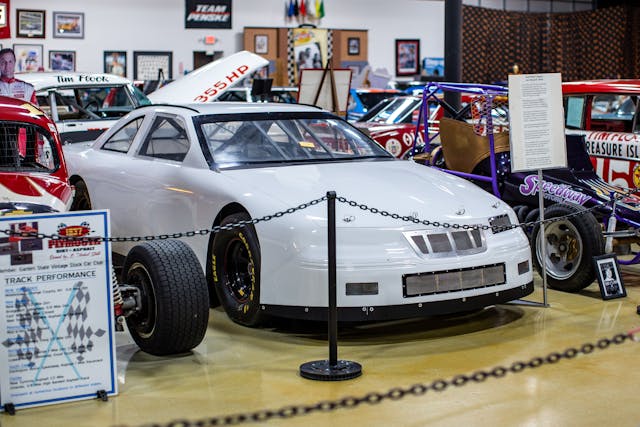
The group started with a Lincoln Mk VIII fascia, hood, and roof. “We couldn’t use the decklid from the Mk VII because it slants down,” says Miller. “It’s a turd with no rear downforce.” Instead, they plucked a decklid from a Town Car. Miller and crew started calling it an aircraft carrier, which still had a requisite 110-inch wheelbase, but measured a full eight inches longer the Chevrolet’s Monte Carlo stocker.
Notwithstanding the incredible length, Miller’s Frankenstein stocker, now dubbed the Marauder, was slicker than snot and scored impressive numbers in the wind tunnel. Lincoln and Ford wanted in on the project, and Ford even went so far as to pitch a new name: the SuperBird. It didn’t matter. Once NASCAR saw the more-than-impressive tunnel figures, they deemed the car not suitable for legal competition, and Miller terminated his Lincoln project.

With Miller’s Marauder circling the drain, Ford pitched the utilization of their Taurus—an ovoid-shaped, four-door sedan. It was unheard of to use anything other than a two-door hardtop in NASCAR. At that time, though, the Taurus was Ford’s second-best selling model behind the F-series. Rivard and Ford tabbed Miller again for a second go.
The second verse, same as the first: Miller and crew began massaging the Taurus to achieve viable aero numbers, this time in 40 percent scale using a model delivered to a shop in the UK. Miller, Scriven, and crew piled on the clay.

Despite his best efforts to shape the sedan into something competitive, Scriven noticed that the decklid, like the Mk VII, had too much negative slope. After some thinking, Miller developed a plan for the Taurus’ droopy rear end.
Ford had recently announced an upcoming refresh for the 1998 Taurus passenger car. Miller called Ford’s Rivard and asked for the delivery of a 1997 Taurus to their shop. In an instant, Miller and team had a silver GL sedan with a gray cloth interior. The team chopped off the rear end and put everything except the rear glass and the decklid in the dumpster out back. From there, metal expert Muttley started in on what would a “1998” production model Ford Taurus.
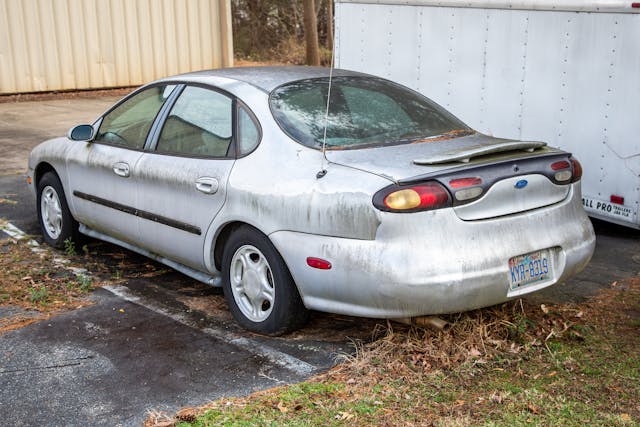
With deck lofted high in the air, Muttley molded a new set of rear quarters. He then reshaped the oval rear window into a flatter pane and fabricated a brand-new rear fascia. Once complete, they sprayed the massaged area to match the rest of the car and affixed the factory wing. Scriven took the dimensions from the new faux Taurus and implemented them into the clay model. The model was then rendered into a full-scale car. Cambern supplied the cherry on top as he delivered a blue Michigan manufacturer plate to affix to the bumper, further establishing the Taurus as a prototype. The final step would be getting it past the guard dog, NASCAR series director Gary Nelson.
“Gary was oil and I was water,” says Miller. The team called Nelson into their North Carolina shop one day to gain his approval of their new Taurus stock car. “He took one look at that car, pointed at the decklid, and said that we were out of our minds,” says Miller. To that Miller offered to show Nelson the “new-for-’98” Taurus production car that they were conveniently storing behind the shop. Nelson’s jaw went slack as they yanked the tarp back. In complete shock, Nelson asked Miller why the rear deck was up so high. “I told him that people were complaining to Ford that they couldn’t get their luggage in the trunk,” says Miller with a grin. Nelson bought it hook, line, and sinker.
Leave it to the press to ruin a great story. After they conned Nelson, the team took their Taurus to a test in Daytona, where a sportswriter spotted the incongruence and asked members of Ford why the car looked so different. The execs at Ford—not privy to the entire stock car skunkworks—were livid. Word got out to Penske and NASCAR president Bill France Jr.
“France called me into his office after he found out,” says Miller. “When I showed up, he told me he wanted to tear up my NASCAR license, but he couldn’t.” France was dealing with antics from each manufacturer, so instead of penalizing multitudes, he instituted a new rule. Ford, Chevrolet, and Pontiac stock cars had to fit under what was named the “common long template.” The principal had put an end to the schoolyard games, and NASCAR had an even playing field, at the cost of manufacturer identity.
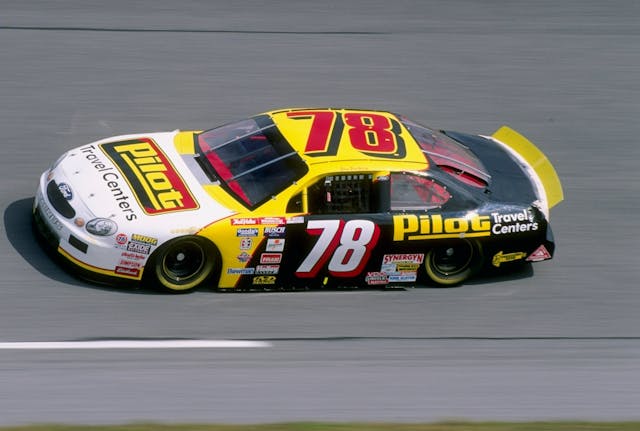
When teams showed up to preseason testing at Daytona ahead of the 1998 season, all three makes had similar vaulted decklids. The “stock” in stock car had been further minimized and the cars on track were barely recognizable as their road-going counterparts. NASCAR’s 1998 season set the tone for manufacturers over the next 25 years—during which marque differentiation was eventually reduced to press-on decals.
Ironically, 1998 was also a hallmark year for stock car racing, as NASCAR celebrated its 50th Anniversary. Dale Earnhardt won the Daytona 500, Jeff Gordon won the championship, Ford driver Rusty Wallace captured seemingly every quick qualifying time, and NASCAR’s landscape was changed forever by a silver GL Taurus.
